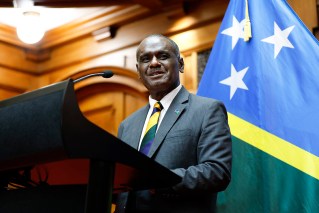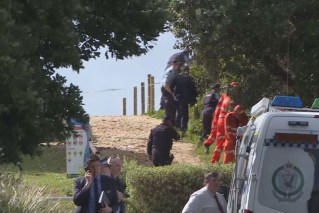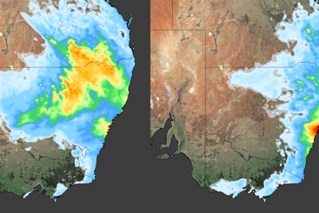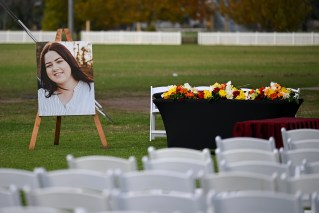Ukraine’s President Volodymyr Zelensky has visited the flood-stricken southern region of Kherson to assess the scale of devastation after the destruction of a huge dam whose waters submerged homes, fields and roads.
Drone video showed areas where often only the roofs of houses were visible above the flooding.
The region’s governor said some 600 square kilometres – an area about 10 times the size of Manhattan – was underwater.
Russia and Ukraine have traded blame for the bursting of the huge Soviet-era Kakhovka hydroelectric dam, which sent waters cascading across the war zone of southern Ukraine in the early hours of Tuesday, forcing tens of thousands to flee their homes.
Moscow and Kyiv also accused each other of shelling the area as rescue workers in rubber dinghies tried to save people and animals from the still-rising flood waters.
“The water was coming in about 100 metres per hour, at least,” said 26-year-old Vitaly, who rowed his boat through the flooded streets of Korsunka, a village in Russian-controlled Kherson region, trying to help neighbours.
“In 15 minutes, it flooded all the basements and wells. Everything was underwater,” said Vitaly, whose own house and plot of land were swallowed up by the deluge.
Ukraine said the floods would leave hundreds of thousands of people without access to drinking water, swamp tens of thousands of hectares of agricultural land and turn at least 500,000 hectares deprived of irrigation into “deserts”.
Mr Zelensky, who has appealed for a “clear and rapid” international effort to help flood victims, held emergency talks with local officials in Kherson, one of five Ukrainian regions which Moscow claims to have annexed but only partially controls.
Mr Zelensky said on his Telegram messaging app they had discussed “evacuation of the population…, elimination of the emergency caused by the dam explosion, organisation of life support for the flooded areas … Also, the prospects for restoring the region’s ecosystem and the operational military situation in the man-made disaster area.”
The Kremlin said Russian President Vladimir Putin had no plans to visit the region but was closely monitoring the situation.
Mr Putin, without providing evidence, has accused Ukraine of destroying the Russian-controlled dam at the suggestion of its Western allies.
Kyiv said several months ago the dam had been mined by Russian forces that captured it early in their 15-month-old invasion, and has suggested Moscow blew it up to try to prevent Ukrainian forces crossing the Dnipro in their counteroffensive.
It is not known how many people may have died as a result of the flooding.
The Russian-installed mayor of Nova Kakhovka, near where the dam is located, said on Thursday at least five people had died but the total death toll is sure to be much higher.
Kherson’s Ukrainian governor, Oleksandr Prokudin, said 68 per cent of the flooded territory was on the Russian-occupied left bank of the Dnipro River.
The “average level of flooding” in the Kherson region on Thursday morning was 5.61 metre, he said.
Kherson city is about 60 kilometres downstream from the Kakhovka dam.
The water level at the Kakhovka reservoir is now approaching a dangerous low, the state company overseeing the facility said on Thursday, saying this could affect the nearby Zaporizhzhia Nuclear Power Station and water supply to other regions.
The UN atomic watchdog said on Tuesday the plant, Europe’s largest, has enough water to cool its reactors for “several months” from a pond located above the reservoir.
Ukrainian and Russian officials have also warned of the danger posed by mines planted during the 15-month-old war and now unearthed and scattered by the flood waters.
“In the past we knew where the hazards were. Now we don’t know. All we know is that (the mines) are somewhere downstream,” said Erik Tollefsen, head of the Weapon Contamination Unit at the International Committee of the Red Cross.
He said the mines could pose a danger for decades to come.
-Reuters








